Welcome to our free classical music site

Do you write about classical music? Are you a blogger? Want to team up with Classical Connect? Send us a message, let's talk!

Do you write about classical music? Are you a blogger? Want to team up with Classical Connect? Send us a message, let's talk!
August 7, 2017. Jolivet and Biber. A very interesting French composer, André Jolivet was born on August 8th of 1905 in Paris. In his childhood, he studied the cello but never went to the conservatory (his parents encouraged him to become a teacher). For a while he studied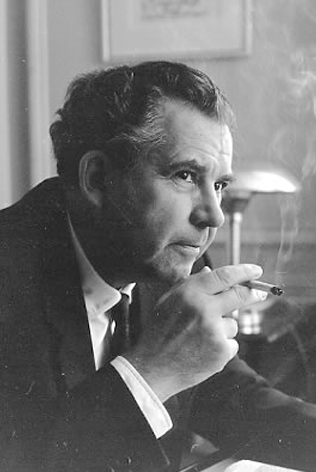 composition with Paul Le Fem, a composer and critic. In his youth Jolivet was influenced by Debussy and Ravel, but it all changed when he became familiar with atonal music: in December of 1927 he attended a concert at the Salle Pleyel during which Pierrot lunaire and several other Schoenberg pieces were performed. That concert changed his life. Soon after he became a pupil of Edgard Varèse, an influential French-American avant-garde composer, whose Amériques was another strong influence. He also befriended Olivier Messiaen, who was very helpful in promoting Jolivet’s music. During the war Jolivet moved away from the atonality, saying that he strives for “evasion and relaxation,” understandable goals during the difficult time but ones that were not shared by his friend Messaien. Jolivet wrote a comic opera, Dolorès, and the ballet Guignol et Pandore. After the war Jolivet became the musical director of the Comédie Française but continued to compose till his last days. He died in Paris on December 20th of 1974.
composition with Paul Le Fem, a composer and critic. In his youth Jolivet was influenced by Debussy and Ravel, but it all changed when he became familiar with atonal music: in December of 1927 he attended a concert at the Salle Pleyel during which Pierrot lunaire and several other Schoenberg pieces were performed. That concert changed his life. Soon after he became a pupil of Edgard Varèse, an influential French-American avant-garde composer, whose Amériques was another strong influence. He also befriended Olivier Messiaen, who was very helpful in promoting Jolivet’s music. During the war Jolivet moved away from the atonality, saying that he strives for “evasion and relaxation,” understandable goals during the difficult time but ones that were not shared by his friend Messaien. Jolivet wrote a comic opera, Dolorès, and the ballet Guignol et Pandore. After the war Jolivet became the musical director of the Comédie Française but continued to compose till his last days. He died in Paris on December 20th of 1974.
In 1933 Jolivet’s teacher Varèse returned to the USA leaving him six objects: a puppet made of wood and copper, a statue of a Balinese princess, a straw goat, and three figurines created by the sculptor Alexander Calder: a magic bird, a winged horse and a cow. As Jolivet said himself, they became his companions and familiar fetishes. In 1935, he composed Mana for piano, naming a movement after each object. Here they are, performed by the pianist Christiane Mathé: Beaujolais, L'oiseau, La Princesse de Bali, La Chèvre, La Vache and Pégase.
Heinrich Ignaz Biber, an Austrian-Bohemian composer, was born on August 12th, 1644 in Wartenberg, a small town in Bohemia which is now called Stráž pod Ralskem. Just to place Biber historically within the Germanic music tradition: he was seven years younger than Dieterich Buxtehude, nine years older thanJohann Pachelbel, and about 40 years older than J.S. Bach. Little is known about his childhood, but around 1668 he was working at the court of Prince Eggenberg in Graz, Austria, and two years later he was already in Kremsier, Moravia, being employed by the Bishop of Olomouc. By then the 26-year-old Biber was already quite famous as a violin player. In 1670 Biber, without asking the Bishop’s permission, left Olomouc and joined the court of the Archbishop of Salzburg. He stayed there for the rest of his life. Biber’s career flourished: he became the Kapellmeister in charge of all music-making at the court of the Archbishop (100 years later the same court would employ the young Mozart), he was titled by the Emperor Leopold, and the Archbishop appointed him lord high steward. While in Salzburg, Biber wrote quite a lot of church music, including several masses and two Requiems, a number of ensemble pieces and several operas. His most famous works in all of his output is a collection of 16 pieces, 15 sonatas plus a Passacaglia for solo violin, known as either The Rosary Sonatas or the Mystery Sonatas; they were written around 1676. This is not his only music that sounds interesting today. Here, for example, is his Sonata no. 3 in F Major from a collection of Violin sonatas published in 1681. The last section (it starts at 7:53) develops in a very unusual way and the ending is quite startling. John Holloway is the solo violinist. Aloysia Assenbaum plays the organ and Lars Ulrik Mortensen is on the harpsichord.
PermalinkJuly 31, 2017. Granados and Schuman. We got so involved with the masters of Renaissance music, especially the great Spaniard Tomás Luis de Victoria, that we missed a very special anniversary: July 27th marked the 150th anniversary of the birth of another Spanish composer, Enrique Granados. More than three centuries separate Victoria and Granados, and during that period the music in Spain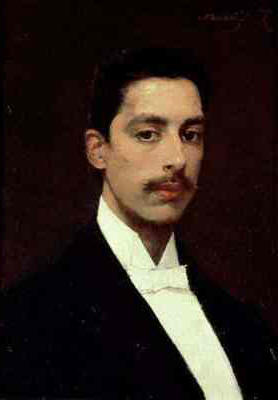 didn’t develop in a straight line. To be fair, arts never develop in a constant progression, even Italy and Germany at some point or other experienced periods of decline. (Flemish music dissolved completely, but that was more a matter of political rearrangements than cultural trends). In the 15th and especially16th century Spain was one of the musical centers of Europe, close to the Franco-Flemish school since Charles I was not just the King of Spain but the Emperor of the Holy Roman Empire. His possessions included Burgundy, the Netherlands and parts of Italy, and Spanish musicians traveled across the realm, learning from the locals while the Flemish and the Italians gravitated toward the courts of Spain. The following Baroque period was still quite productive (Domenico Scarlatti spent much of his life in Spain) but by the end of the 17th century musical culture was in a decline. This decline continued longer than in any other country of major cultural significance. And it stopped only with the arrival of a brilliant group of composers in the second half of the 19th century, Isaac Albéniz, Manuel de Falla, Joaquin Turina, and of course Enrique Granados. We’ve written about Granados many times (for example, here), so we’ll address some of his works (his output was not very large as he tragically died at the age of 50). While his piano pieces, such as Twelve danzas españolas, Goyescas Eight Valses Poéticos are among his most popular pieces, Granados also wrote many wonderful songs. One cycle is called Tonadillas al estilo antiguo (Little tunes in ancient style). We’ll hear three of them, El tra la la y el punteado, El majo tímido and La maja dolorosa. They are performed by one of the greatest mezzo-sopranos of the 20th century, Teresa Berganza, with Félix Lavilla at the piano (at the time of the recording, 1961, Berganza and Lavilla were married).
didn’t develop in a straight line. To be fair, arts never develop in a constant progression, even Italy and Germany at some point or other experienced periods of decline. (Flemish music dissolved completely, but that was more a matter of political rearrangements than cultural trends). In the 15th and especially16th century Spain was one of the musical centers of Europe, close to the Franco-Flemish school since Charles I was not just the King of Spain but the Emperor of the Holy Roman Empire. His possessions included Burgundy, the Netherlands and parts of Italy, and Spanish musicians traveled across the realm, learning from the locals while the Flemish and the Italians gravitated toward the courts of Spain. The following Baroque period was still quite productive (Domenico Scarlatti spent much of his life in Spain) but by the end of the 17th century musical culture was in a decline. This decline continued longer than in any other country of major cultural significance. And it stopped only with the arrival of a brilliant group of composers in the second half of the 19th century, Isaac Albéniz, Manuel de Falla, Joaquin Turina, and of course Enrique Granados. We’ve written about Granados many times (for example, here), so we’ll address some of his works (his output was not very large as he tragically died at the age of 50). While his piano pieces, such as Twelve danzas españolas, Goyescas Eight Valses Poéticos are among his most popular pieces, Granados also wrote many wonderful songs. One cycle is called Tonadillas al estilo antiguo (Little tunes in ancient style). We’ll hear three of them, El tra la la y el punteado, El majo tímido and La maja dolorosa. They are performed by one of the greatest mezzo-sopranos of the 20th century, Teresa Berganza, with Félix Lavilla at the piano (at the time of the recording, 1961, Berganza and Lavilla were married).
American composer William Schuman was born on August 4th of 1910 in Manhattan. Schumann is one of the most significant tonal composers of the mid-20th century. He started seriously composing late, after hearing in 1930 a concert conducted by Toscanini (eventually he removed from publication all works written before 1938). Schuman studied with the composer Roy Harris; Serge Koussevitzky, conductor of the Boston Symphony Orchestra, became a friend and a major supporter. In addition to composing, which he did for the rest of his life, Schuman also had a big administrative career: he was the president of the Juilliard School, where he was instrumental in creating the Juilliard String Quartet. For several years he was also the president of the Lincoln Center. Hear is the second section of Schuman’s New England Triptych, “When Jesus Wept.” The Eastman-Rochester Orchestra is conducted by Howard Hanson.Permalink
July 24, 2017. Tomás Luis de Victoria. A week ago, when we presented three great composers of the High Renaissance, we gave Tomás Luis de Victoria short shift. We’ll try to correct it in this post. A younger contemporary of Palestrina and Orlando di Lasso, Victoria was born in 1548 in a small town of Sanchidrián near Ávila. We know some unusual facts about him, for example, that his mother was from a converso family, that is a family of Spanish Jews who were forced to convert to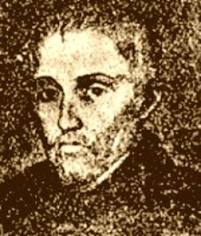 Catholicism. Victoria went to school in Ávila, sang as a choirboy in the local cathedral and probably learned there to play the organ. The cathedral of Ávila was one of Spain’s musical centers, and Victoria’s teachers were prominent composers and musicians. Some speculate that while in Ávila, he met Antonio de Cabezón, the famous blind composer, second in fame only to Cristóbal de Morales. Somewhere around 1563, once his voice had broken, Victoria was sent to Rome, to the Collegio Germanico, a preeminent Catholic school known for its excellent music education. As we mentioned last week, while at the Collegio, Victoria almost certainly met Palestrina, who at the time was maestro di cappella at the basilica of San Giovanni in Laterano, and very likely was his pupil. In 1569 Victoria became a singer and the organist at Santa Maria in Monserrato degli Spagnoli, the Spanish national church in Rome. Such was his reputation, that a couple years later he was invited to teach music at the Collegio Germanico and eventually was appointed maestro di cappella. In 1574, he was ordained a priest. A year later he was appointed maestro di capella at Sant'Apollinare alle Terme, the church of the Collegium. By then Victoria was already a widely known and well-published composer.
Catholicism. Victoria went to school in Ávila, sang as a choirboy in the local cathedral and probably learned there to play the organ. The cathedral of Ávila was one of Spain’s musical centers, and Victoria’s teachers were prominent composers and musicians. Some speculate that while in Ávila, he met Antonio de Cabezón, the famous blind composer, second in fame only to Cristóbal de Morales. Somewhere around 1563, once his voice had broken, Victoria was sent to Rome, to the Collegio Germanico, a preeminent Catholic school known for its excellent music education. As we mentioned last week, while at the Collegio, Victoria almost certainly met Palestrina, who at the time was maestro di cappella at the basilica of San Giovanni in Laterano, and very likely was his pupil. In 1569 Victoria became a singer and the organist at Santa Maria in Monserrato degli Spagnoli, the Spanish national church in Rome. Such was his reputation, that a couple years later he was invited to teach music at the Collegio Germanico and eventually was appointed maestro di cappella. In 1574, he was ordained a priest. A year later he was appointed maestro di capella at Sant'Apollinare alle Terme, the church of the Collegium. By then Victoria was already a widely known and well-published composer.
In 1583 Victoria dedicated the second volume of masses (Missarum libri duo) to King Philip II and expressed the desire to return to Spain and lead the life of a priest. His wish was granted: Victoria was named the chaplain to the Dowager Empress María. Empress Maria lived in the Monasterio de las Descalzas Reales. Masses at the convent were served daily, with Victoria acting as the choir master and organist. After dowager’s death in 1603 he remained at the convent in a position endowed by Maria. Victoria was held in very high esteem, was paid very well, and was free to travel. In 1594, he happened to be in Rome when Palestrina died; the funeral mass was celebrated at Saint Peter’s Basilica, with Victoria in attendance. By the end of his own life, Victoria’s music was played all over Europe and even in the New World: his masses were very popular in Mexico and Bogotá. He died on August 20th of 1611 and was buried at the Monasterio de las Descalzas.
Last time we mentioned that Victoria wrote some of the most profound music of the time; it’s not an exaggeration, and here’s an example. When Dowager Empress María died in 1603, Victoria wrote Officium Defunctorum – music for a prayer cycle for the deceased, practically a funeral mass. Listen to the selected movement and judge for yourself: here is the introductory movement, Taedet Animam Meam (My soul is weary of my life); and here – Kyrie. They’re performed, with extraordinary clarity and style, by Musica Ficta, a Spanish ensemble. You can hear all 10 movement of Officium Defunctorum by searching our library.Permalink
July 17, 2017. Music of High Renaissance. With the dearth of prominent composers born this week, we’ll celebrated three great masters of the Renaissance whose birthdays remain unknown to music historians. Giovanni Pierluigi da Palestrina was born around 1525, Orlando di Lasso (or Orlande de Lassus, as his name is sometimes spelled) – in 1530 or 1532, and Tomás Luis de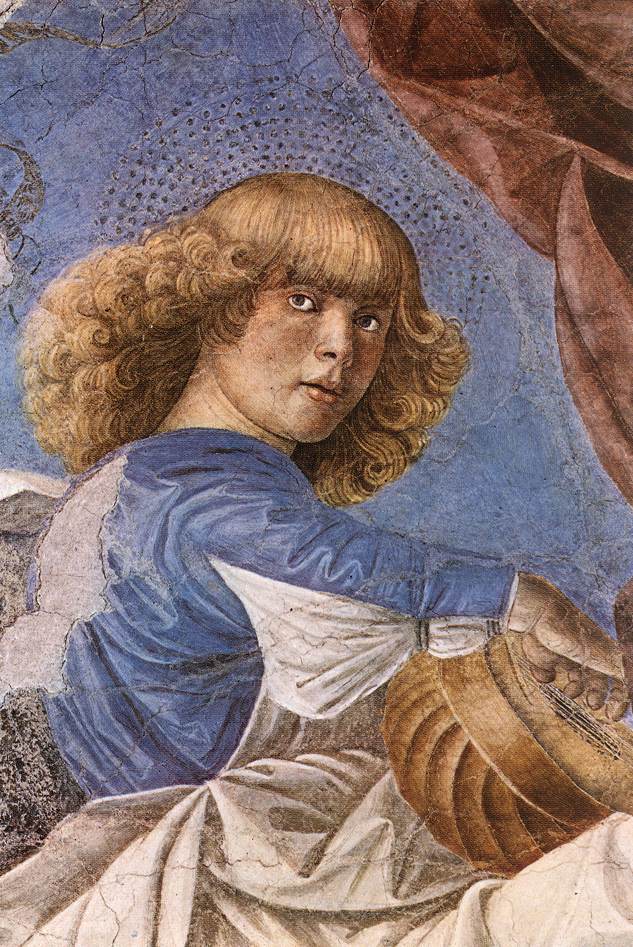 Victoria – in 1548. Even though Palestrina was the only Italian among the three (Lasso was Flemish, born in Mons, County of Hainaut, while Victoria was Spanish), Rome was the place were all three had lived and thrived artistically. Also, all three were influenced by the music of their Franco-Flemish predecessors, Josquin des Prez in particular. Palestrina, the great master of polyphony, was born in the town of the same name (“da Palestrina” means “from Palestrina”). In 1537, he was a chorister at the basilica of Santa Maria Maggiore in Rome but then had to return to Palestrina. His career didn’t take off till 1551, when Pope Julius III, the former Cardinal-Bishop of Palestrina, heard his music and appointed him maestro di cappella of the Cappella Giulia, one of the papal choirs at Saint Peter’s Basilica. In January of 1555 Palestrina was promoted to the Sistine Chapel, the pope’s official musical chapel. Unfortunately, just three months later Julius III died. Marcellus II became the pope (you can read about Palestrina’s famous Missa Papae Marcelli here) but he died three weeks later. The next pope, Paul IV, dismissed Palestrina from the Basilica as the composer was married (previous popes were happy to overlook this predicament). In October of the same year Palestrina was appointed maestro di cappella at the basilica of San Giovanni in Laterano, a position previously held by Lasso. In 1560, he moved to another great basilica, Santa Maria Maggiore. He returned to Saint Peter’s Capella Giulia in 1571 and remained there for the rest of his life. Palestrina died on February 2nd of 1594. He wrote more than 100 masses, 300 motets and 140 madrigals. Here’s one of his motets, Sicut Cervus, performed by the Cambridge Singers, John Rutter conducting.
Victoria – in 1548. Even though Palestrina was the only Italian among the three (Lasso was Flemish, born in Mons, County of Hainaut, while Victoria was Spanish), Rome was the place were all three had lived and thrived artistically. Also, all three were influenced by the music of their Franco-Flemish predecessors, Josquin des Prez in particular. Palestrina, the great master of polyphony, was born in the town of the same name (“da Palestrina” means “from Palestrina”). In 1537, he was a chorister at the basilica of Santa Maria Maggiore in Rome but then had to return to Palestrina. His career didn’t take off till 1551, when Pope Julius III, the former Cardinal-Bishop of Palestrina, heard his music and appointed him maestro di cappella of the Cappella Giulia, one of the papal choirs at Saint Peter’s Basilica. In January of 1555 Palestrina was promoted to the Sistine Chapel, the pope’s official musical chapel. Unfortunately, just three months later Julius III died. Marcellus II became the pope (you can read about Palestrina’s famous Missa Papae Marcelli here) but he died three weeks later. The next pope, Paul IV, dismissed Palestrina from the Basilica as the composer was married (previous popes were happy to overlook this predicament). In October of the same year Palestrina was appointed maestro di cappella at the basilica of San Giovanni in Laterano, a position previously held by Lasso. In 1560, he moved to another great basilica, Santa Maria Maggiore. He returned to Saint Peter’s Capella Giulia in 1571 and remained there for the rest of his life. Palestrina died on February 2nd of 1594. He wrote more than 100 masses, 300 motets and 140 madrigals. Here’s one of his motets, Sicut Cervus, performed by the Cambridge Singers, John Rutter conducting.
While Palestrina had lived in just two cities and traveled little, Orlando led a peripatetic life, at least the first half of it. He was twelve when he left Mons, accompanying Ferrante Gonzaga, an Italian condottiero, to Mantua and then Sicily. He then moved to Milan, where he probably met other musicians in the service of Ferrante. In 1550 he was in Naples, but then moved to Rome, where he found employment at the Roman residence of Cosimo I de' Medici, Grand Duke of Tuscany. In 1553, at the age of just 21, he became the maestro di cappella at San Giovanni in Laterano, a very prestigious position for such a young man. He stayed there for one year, and upon leaving embarked on a trip to France, England and Antwerp, where Tielman Susato published a collection of Orlando’s motets and madrigals, now knows as his Op. 1. In 1556 Orlando accepted an invitation to join the court of Duke of Bavaria Albrecht V in Munich. Orlando was hired as a singer (tenor) and composer, and it took him some years to acquire the position of maestro di cappella, but eventually he settled down in Munich, marrying a daughter of the Duchess’s maid of honor. As part of his duties, he wrote Masses for the morning and Magnificats for the evening services and many motets. He also supervised the musical education of the choirboys. As his fame as a composer grew, he was visited by many musicians. Andrea Gabrieli came in 1562 and stayed for two years, and Andrea’s nephew Giovanni joined him in the 1570s. Though he traveled quite a bit, he stayed employed with the dukes for the rest of his life. Here’s an excerpt from Orlando’s amazing Prophetiae Sibyllarum (Prophesies of the Sibyls), with the Hilliard Ensemble, Paul Hillier conducting.
We left almost no time for Tomás Luis de Victoria, the greatest Spanish composer of the 16th century who wrote the most profound music of the time. Victoria was born in a small town not far from Ávila, in which cathedral he was a choirboy. In 1565 he went to Rome. He almost certainly knew Palestrina and very likely was his pupil. Here’s his motet Vere languores. Ensemble The Sixteen is conducted by Harry Christophers.Permalink
July 10, 2017. Recent anniversaries: Gluck and more. We missed several significant anniversaries and will make up for at least some of them. The great reformer of the opera, Christoph Willibald Gluck was born in a small town of Erasbach in Bavaria on July 2nd of 1714. He was four when his family moved to Bohemia (Antonio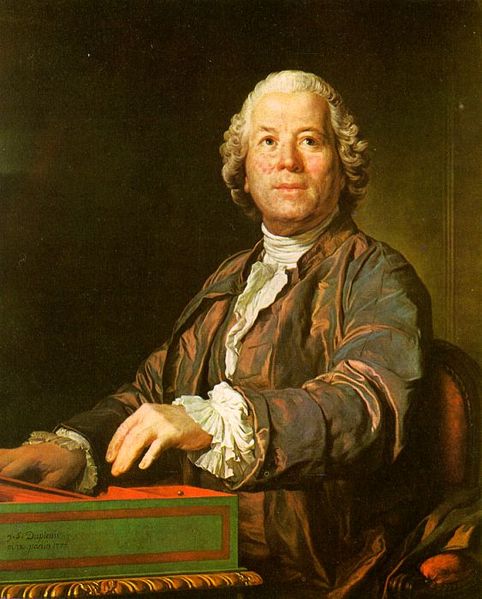 Salieri, his pupil, wrote in his memoir that Czech was Gluck’s native language and that he expressed himself in German with difficulty). Gluck studied mathematics at the university of Prague but probably never graduated. In 1737 he went to Milan to study music with Giuseppe Sammartini. Gluck’s first opera was Artaserse, on the libretto of the famous Metastasio, composed for the Carnival of 1742 and performed in the Teatro Regio Ducal (the theater, one of the largest in Milan, burned down in 1776 and as his replacement Nuovo Regio Ducal Teatro alla Scala was built; we now know it as La Scala). In 1745 Gluck traveled to London. There he composed an opera, but more importantly, became familiar with the operas of George Frideric Handel. Handel was not terribly impressed with Gluck’s compositions: the music historian Charles Burney wrote in his “Life of Handel” that the great master said of Gluck “he knows no more of contrapunto, as mein cook, Waltz” (an interesting mixture of three languages that is). Gluck didn’t stay in London for too long; in 1747 he was back in Vienna, writing an opera to celebrate the Empress Maria Theresa's birthday. The opera was La Semiramide riconosciuta, again on Metastasio's libretto, and the assignment was very prestigious: Gluck got it ahead of the much more established Johann Adolph Hasse. The opera was a popular success but Metastasio called it “archvandalian music, which is insupportable’” and Gluck left Vienna shortly after. For the next few years Gluck earned money as an “itinerant maestro di cappella,” moving around Europe, first with the troupe of the impresario Pietro Mingotti and later with the troupe of Giovanni Battista Locatelli. He directed different orchestras, composed, and staged productions of his own operas. One of them was La clemenza di Tito, written on Metastasio’s old libretto. The opera, composed to celebrate the name day of King Charles VII of Naples, was performed in Teatro di San Carlo, Naples’s most important theater, and featured the famous soprano castrato Cafarelli. One aria, the exceptionally difficult Se mai senti spirarti sul volto, became especially popular. Castratos disappeared from opera stages by the end of the 19th century; fortunately, we have the incomparable Cecilia Bartoli, who brought to life so many arias from the castrato repertoire. Here she is in Se mai senti recorded live in 2001; the ensemble Akademie für Alte Musik Berlin is conducted by Bernhard Forck. As for La Clemenza, it proved to be a very popular libretto. Gluck’s 1752 rendition wasn’t the first one: Antonio Caldara wrote an opera in 1734, and before Gluck there were 17 more operas written on the same text, Hasse using it not once but three times, creating different version in 1735, 1738 and then in 1759. Of the famous composers, Baldassare Galuppi and Josef Myslivecek used the libretto. Altogether, 45 operas were written to Metastasio’s piece. But the most famous one was, without a doubt, the one written by Mozart in 1791, his last one.
Salieri, his pupil, wrote in his memoir that Czech was Gluck’s native language and that he expressed himself in German with difficulty). Gluck studied mathematics at the university of Prague but probably never graduated. In 1737 he went to Milan to study music with Giuseppe Sammartini. Gluck’s first opera was Artaserse, on the libretto of the famous Metastasio, composed for the Carnival of 1742 and performed in the Teatro Regio Ducal (the theater, one of the largest in Milan, burned down in 1776 and as his replacement Nuovo Regio Ducal Teatro alla Scala was built; we now know it as La Scala). In 1745 Gluck traveled to London. There he composed an opera, but more importantly, became familiar with the operas of George Frideric Handel. Handel was not terribly impressed with Gluck’s compositions: the music historian Charles Burney wrote in his “Life of Handel” that the great master said of Gluck “he knows no more of contrapunto, as mein cook, Waltz” (an interesting mixture of three languages that is). Gluck didn’t stay in London for too long; in 1747 he was back in Vienna, writing an opera to celebrate the Empress Maria Theresa's birthday. The opera was La Semiramide riconosciuta, again on Metastasio's libretto, and the assignment was very prestigious: Gluck got it ahead of the much more established Johann Adolph Hasse. The opera was a popular success but Metastasio called it “archvandalian music, which is insupportable’” and Gluck left Vienna shortly after. For the next few years Gluck earned money as an “itinerant maestro di cappella,” moving around Europe, first with the troupe of the impresario Pietro Mingotti and later with the troupe of Giovanni Battista Locatelli. He directed different orchestras, composed, and staged productions of his own operas. One of them was La clemenza di Tito, written on Metastasio’s old libretto. The opera, composed to celebrate the name day of King Charles VII of Naples, was performed in Teatro di San Carlo, Naples’s most important theater, and featured the famous soprano castrato Cafarelli. One aria, the exceptionally difficult Se mai senti spirarti sul volto, became especially popular. Castratos disappeared from opera stages by the end of the 19th century; fortunately, we have the incomparable Cecilia Bartoli, who brought to life so many arias from the castrato repertoire. Here she is in Se mai senti recorded live in 2001; the ensemble Akademie für Alte Musik Berlin is conducted by Bernhard Forck. As for La Clemenza, it proved to be a very popular libretto. Gluck’s 1752 rendition wasn’t the first one: Antonio Caldara wrote an opera in 1734, and before Gluck there were 17 more operas written on the same text, Hasse using it not once but three times, creating different version in 1735, 1738 and then in 1759. Of the famous composers, Baldassare Galuppi and Josef Myslivecek used the libretto. Altogether, 45 operas were written to Metastasio’s piece. But the most famous one was, without a doubt, the one written by Mozart in 1791, his last one.
By 1751 Gluck settled in Vienna. The most productive, but also the most disappointing period of his life was still ahead of him. We’ll write about it another time.
Two more names we’d like to mention: another Czech-speaker, the composer Leoš Janáček was born on July 3rd of 1854. And the Italian composer Ottorino Respighi was born on this day, July 9th of 1879.Permalink
July 3, 2017. Mahler, Symphony no. 5. Gustav Mahler was born on July 7th of 1860, and to celebrate his birthday we will again turn to one of his symphonies, this time the Fifth. The time of its composition, the years of 1901 and 1902, is closely linked to Mahler’s marriage to Alma Schindler. In 1897 Mahler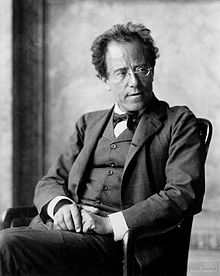 was appointed the music director of the Vienna Hofoper, one of the most important opera theaters in Europe, whose orchestra, the Vienna Philharmonic, was (and still is) one of the best. Mahler’s early years as the director were rather turbulent. As he was mounting new opera productions (the first two were Wagner’s Lohengrin and Mozart’s Zauberflöte), Mahler required utter discipline and precision. Very demanding, he was not too sensitive toward the singers and orchestra players, whose feelings he often hurt. The atmosphere within the opera house was difficult but results were of a very high quality. Problems of a different sort accompanied Mahler as the conductor of subscription concerts with the Vienna Philharmonic. To many conservative music critic, he appeared not sufficiently felicitous to the classical scores. And indeed, Mahler often altered the orchestration and was known to amplify musical dynamics beyond the generally accepted practices of the day. Things were exacerbated by the partisan, and often very hostile, critics. A large section of the society was deeply anti-Semitic (the Mayor of Vienna, Karl Lueger, was the leader of the anti-Semitic Austrian Christian Social Party), and even though Mahler converted to Christianity to take a position with the Hofoper, they never forgot his Jewish roots.
was appointed the music director of the Vienna Hofoper, one of the most important opera theaters in Europe, whose orchestra, the Vienna Philharmonic, was (and still is) one of the best. Mahler’s early years as the director were rather turbulent. As he was mounting new opera productions (the first two were Wagner’s Lohengrin and Mozart’s Zauberflöte), Mahler required utter discipline and precision. Very demanding, he was not too sensitive toward the singers and orchestra players, whose feelings he often hurt. The atmosphere within the opera house was difficult but results were of a very high quality. Problems of a different sort accompanied Mahler as the conductor of subscription concerts with the Vienna Philharmonic. To many conservative music critic, he appeared not sufficiently felicitous to the classical scores. And indeed, Mahler often altered the orchestration and was known to amplify musical dynamics beyond the generally accepted practices of the day. Things were exacerbated by the partisan, and often very hostile, critics. A large section of the society was deeply anti-Semitic (the Mayor of Vienna, Karl Lueger, was the leader of the anti-Semitic Austrian Christian Social Party), and even though Mahler converted to Christianity to take a position with the Hofoper, they never forgot his Jewish roots.
Nonetheless, by 1901 things were settling down. Mahler resigned as the conductor of the Philharmonic series (his re-orchestration of Beethoven’s Ninth symphony cause a real scandal), concentrating on opera. His own compositions were getting wider acceptance. He was financially secure, and could even afford a villa, in Maiernigg on the Wörthersee. The summer of 1901 was the first one of many that he spent there, composing. In November of 1901, at a dinner party given by Sofie Clemenceau (sister-in-law of George Clemenceau, the future Prime-minister of France) he met Alma Schindler. Alma, the daughter of an established landscape painter Emil Schindler, was then 22 (and 19 years younger than Mahler). She was known as a fine-looking society girl. At the time, Alma was having an affair with the composer Alexander von Zemlinsky, her music teacher. That didn’t prevent a brief but intense romance between her and Gustav, and on March 9th of 1902 they were married. One of the conditions of the marriage, imposed by Gustav, was that Alma would drop her own composition efforts (Mahler changed his attitude some years later, helping Alma to edit and publish several of her compositions). Both Mahler’s friends and his enemies were surprised: the friends, because they considered Alma to be too young for Gustav and too flirtatious, his enemies – because they considered her too pretty and too much a part of the society to marry a Jew. But by the time of the marriage Alma was already pregnant with their first daughter and happy to assume her conjugal responsibilities.
By then Mahler had already started working on his Fifth symphony. He and Alma spent the summer months of 1902 at their Maiernigg villa. Mahler built a separate small studio, where he spent the morning hours composing. By the end of the summer of 1902 the Fifth symphony was finished, although it would wait for the premier for another two years. Here it is, in the 1996 performance by the Vienna Philharmonic, Pierre Boulez conducting.Permalink